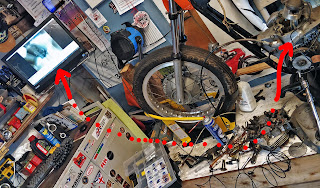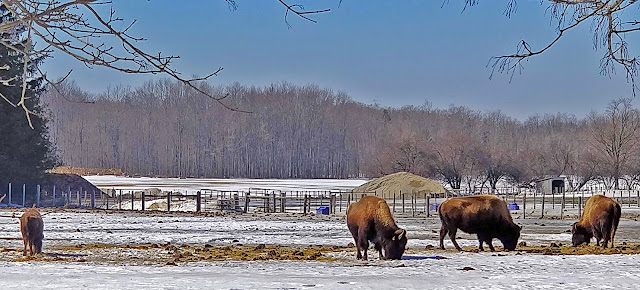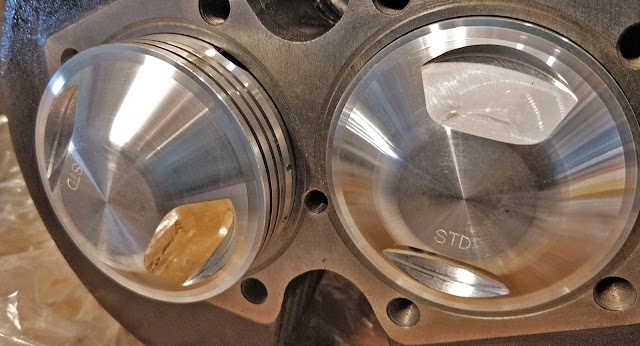I've got a degree in English, but working on the old Bonneville is stressing out even my vocabulary:
 |
| That'd be your gudgeon pin right there. |
Gudgeon: one who will bite at any bait or swallow anything, credulous or gullible person Mer. V. I. i. 102. (that might apply to this project)
Definition of gudgeon
1: PIVOT sense 1, JOURNAL (we're getting closer)
2: a socket for a rudder pintle (a rudder pintle?)
Definition of gudgeon pin: WRIST PIN
Definition of wrist pin: a stud or pin that forms a journal (as in a crosshead) for a connecting rod (that's it!)They can make up anything! Nobody knows! Well, you need a new Johnson Rod in here!
A few people know, George. Consumer ignorance is expensive, but who has time
to understand the machines they depend on?
Gudgeon pins? After the massive fight that was removing the seized cylinder head, I was bracing for misery, but I was able to pop the circlips (!) out and tap the gudgeon pins (!) through with no sweating and swearing. Pink Floyd was playing on the computer and I think music from its era calms the old Bonneville down when I'm working on it.
The circlips popped out easily and a 3/8 inch socket extension was the perfect size to tap out the 'wrist' pins. I thought the one on the seized side might cause more problems because it had been stuck in place with moisture but it didn't and both came out easily leaving a motor bereft of its pistons.
British Cycle Supply Co. delivered my 750cc kit quickly and without any headaches (and also for about $200 less than comparable kits out of the USA), so I got the shiny new bits out and had a look:
You'd think a 750cc head would look significantly different to the stock 650cc unit, but you have to look closely to see a difference in size.

I could just chuck it all back together now and hope for the best, but if it ends up having other niggles rushing things at this point is just false economy. I'm not worried about making the bike look mint, but I do want it to be dependable and that wouldn't be the case if I haven't checked it over completely after such a long (30 year?) layoff. An engine out deep restoration was always the intention here and I'm not in any kind of rush since the other two bikes are both five by five and felt fantastic on their first rides of the year this past weekend.


The new cylinders don't have the carbon build up from all those combustion cycles and look pretty spectacular in their pristine newness:
 Here's the whole kit from British Cycle Supply. It includes the cylinder head, cylinders, piston rings, circlips for the gudgeon pins and a head gasket. I swiped the last one they had in stock for $688.75CAD ($535USD - told you I got a good deal). Unfortunately I might be the last person on the planet to get a 750cc kit that cheap. Prices will be going up on the new stock and probably even higher than that as we're in an inflationary spiral thanks to Putin overreaching and years of pandemic fueled broken supply chains; we live in interesting times.
Here's the whole kit from British Cycle Supply. It includes the cylinder head, cylinders, piston rings, circlips for the gudgeon pins and a head gasket. I swiped the last one they had in stock for $688.75CAD ($535USD - told you I got a good deal). Unfortunately I might be the last person on the planet to get a 750cc kit that cheap. Prices will be going up on the new stock and probably even higher than that as we're in an inflationary spiral thanks to Putin overreaching and years of pandemic fueled broken supply chains; we live in interesting times.


 |
| That look on my face after the first ride in a long, long time. |
 |
| The 12 year old Kawasaki (left) and the 19 year old (!) Tiger (right) were keen to turn a wheel after a long hibernation. |
 |
| Bison were out bisoning at Black Power Bison Co. when I was out for a ride in balmy 6°C March Sunday. |







